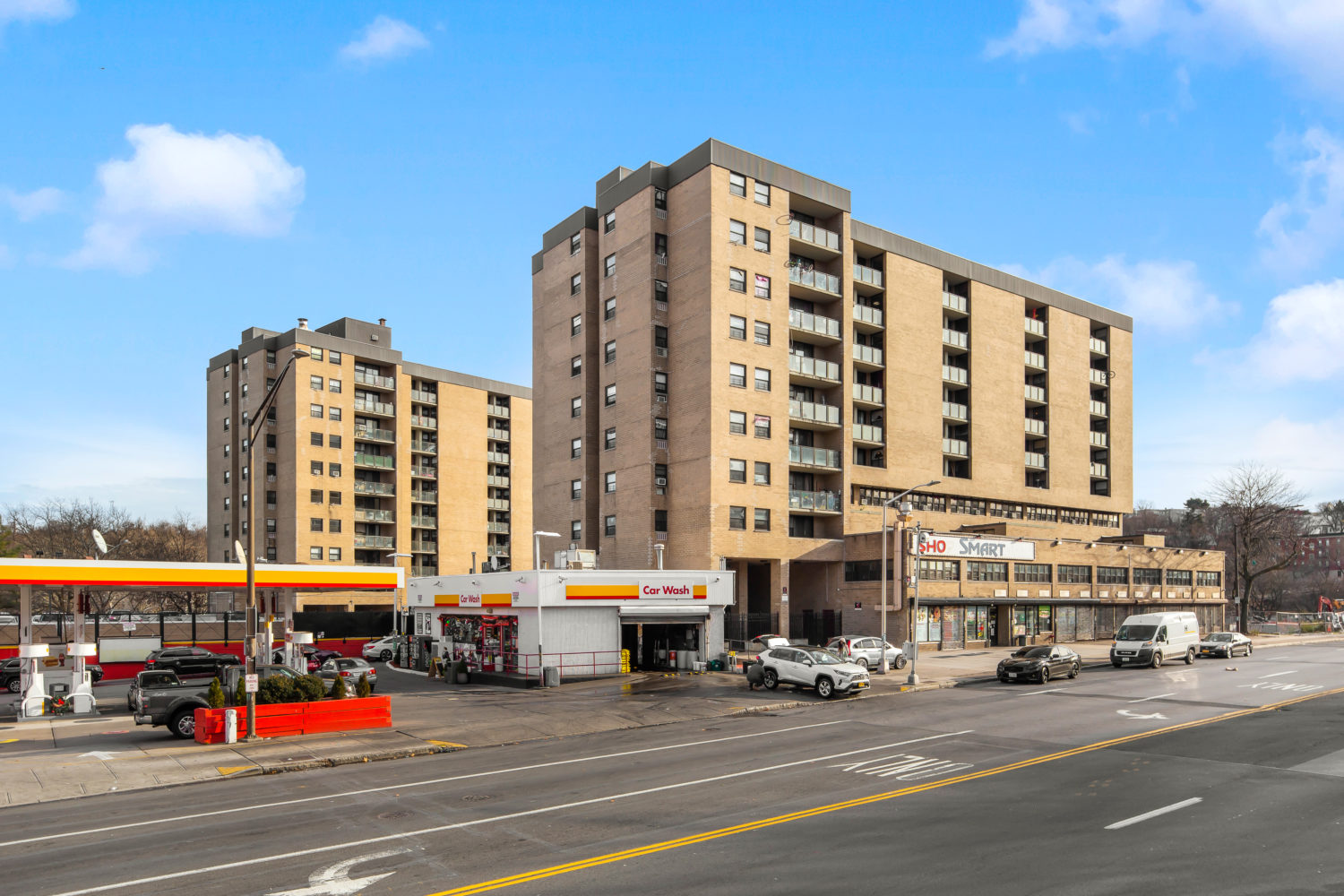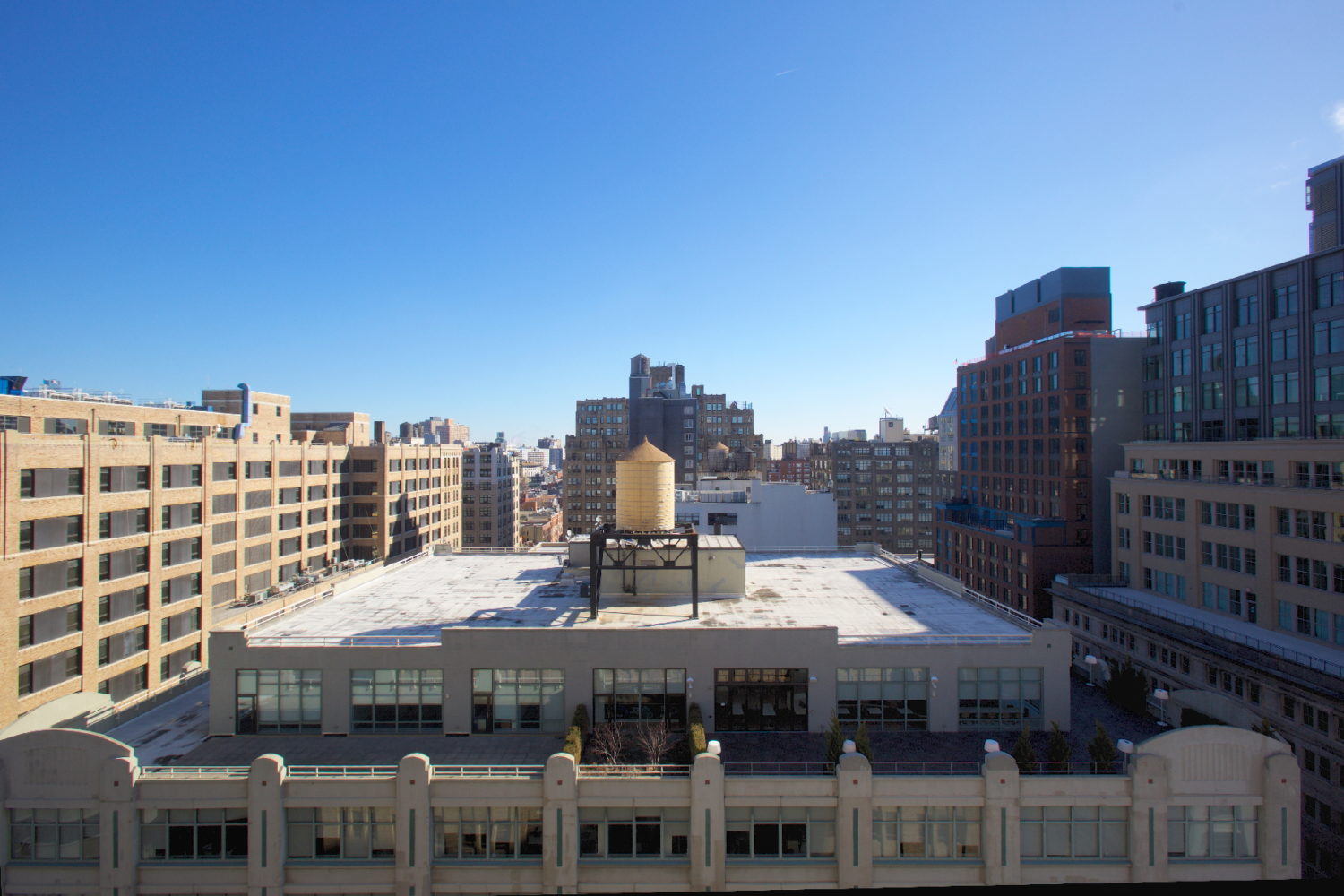On September 14, 2022, NYSERDA and BE-Ex hosted the fourth event of their High Rise / Low Carbon Series, focusing on thermal networks and waste heat recovery systems deployed in Empire Building Challenge partner retrofit projects to dramatically reduce energy waste, peak loads, and energy costs. Stream the event in full here.
Featured Projects

Whitney Young Manor — Omni New York © Sindayiganza Photography
Whitney Young Manor • To complement major envelope improvements at this 2-building 1973-built affordable housing complex in Yonkers, NY, Omni New York opted for energy recovery ventilation, which captures energy from exhaust air to temper incoming fresh air, drastically reducing heating and cooling loads. In addition, Omni New York has proposed wastewater heat recovery, a technology novel to the New York market that captures heat energy from wastewater, and, in tandem water-source heat pumps, provides additional heating and cooling capacity.
 345 Hudson — Hudson Square Properties © Kevin Chu + Jessica Paul
345 Hudson — Hudson Square Properties © Kevin Chu + Jessica Paul
345 Hudson • Hudson Square Properties’ 345 Hudson project is a carefully phased retrofit that uses hydronic thermal networks to enable the sharing of heat within and between floors to dramatically improve energy and carbon performance. Hydronic loops run within floors, allowing for heat transfer between different zones, while a thermal spine running up the building enables the sharing of heat energy between floors. The resulting network redistributes heat across zones— like an overheated building core and underheated perimeter—towards a natural equilibrium, reducing heating and cooling demand. Watersource heat pumps on each floor, connected to the thermal network, provide additional heating or cooling, only when necessary.
Key Takeaways
Waste energy presents a massive opportunity for building owners trying to improve energy performance and reduce carbon emissions. Lawrence Livermore National Laboratory estimates that about two-thirds of the energy produced in the U.S. is wasted yearly. At the building scale, the issue persists (e.g., energy rejected via cooling towers or through leaky envelopes).
Thermal networking and heat recovery technologies have been vetted across decades in regions outside the United States. The hydronic network designed for Hudson Square Properties’ 345 Hudson was inspired by approaches common in Nordic countries, gaining traction through aggressive climate policy and deep market penetration of heat pump technology.
With heat recovery, buildings shift from energy consumers to prosumers. Supermarkets, data centers, and medical facilities, which constantly reject heat energy, could become primary heating sources for other buildings, using heat capture and reuse technology.
Thermal networks benefit from scale, taking advantage of the natural variability in heat across different zones. Thermal networking can be applied on a floor-to-floor, building-to-building, or district basis. As the network grows, variability in heat demand increases, increasing opportunities to share heat—which increases systemwide efficiency. Campus applications with single building owners make a particularly strong case.
Reduce, recover, and then replace. Efficiency and heat recovery should be pursued before building electrification. Heat capture and recovery strategies can reduce peak loads, enable downsized electric heating and cooling equipment, and minimize electric grid impacts at scale, as our building stock becomes increasingly electrified. This phased approach is central to NYSERDA’s Resource Efficient Decarbonization (RED) framework, which distills lessons learned by EBC partners into a holistic approach to reducing fossil fuel consumption in buildings.